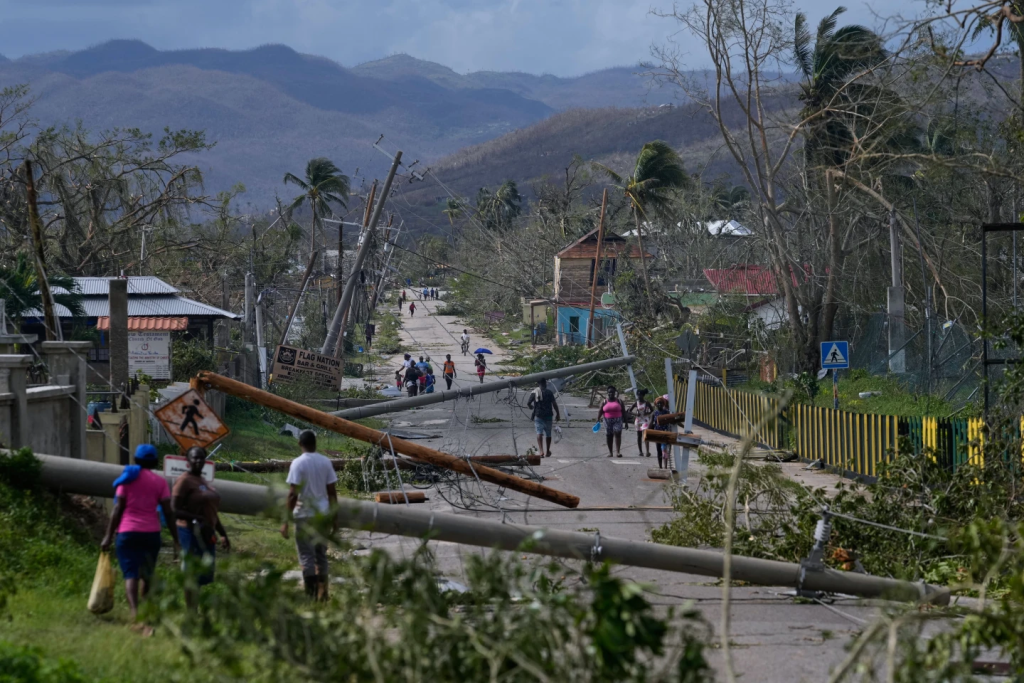Hurricane Melissa left at least dozens dead and caused widespread destruction across Cuba, Haiti and Jamaica, where roofless homes, toppled utility poles and water-logged furniture dominated the landscape Wednesday.
A landslide blocked the main roads of Santa Cruz in Jamaica’s St. Elizabeth parish, where the streets were reduced to mud pits. Residents swept water from homes as they tried to salvage belongings. Wind ripped off part of the roof at a high school that serves as a public shelter.
“I never see anything like this before in all my years living here,” resident Jennifer Small said.
The extent of the damage from the deadly hurricane was unclear Wednesday as widespread power outages and dangerous conditions persisted in the region.
“It is too early for us to say definitively,” said Dana Morris Dixon, Jamaica’s education minister.
Melissa made landfall Tuesday in Jamaica as a Category 5 hurricane with top winds of 185 mph (295 kph), one of the strongest Atlantic hurricanes on record, before weakening and moving on to Cuba, but even countries outside the direct path of the massive storm felt its devastating effects.
At least 25 people have died across Haiti and 18 are missing, Haiti’s Civil Protection Agency said in a statement Wednesday. Twenty of those reported dead and 10 of the missing are from a southern coastal town where flooding collapsed dozens of homes. At least eight are dead in Jamaica.
In Cuba, officials reported collapsed houses, blocked mountain roads and roofs blown off buildings Wednesday, with the heaviest destruction concentrated in the southwest and northwest. Authorities said about 735.000 people remained in shelters.
“That was hell. All night long, it was terrible,” said Reinaldo Charon in Santiago de Cuba. The 52-year-old was one of the few people venturing out Wednesday, covered by a plastic sheet in the intermittent rain.
Forecasters expect Melissa, now a Category 1 hurricane, to bring dangerous winds, flooding and storm surge to the Bahamas on Wednesday night.





